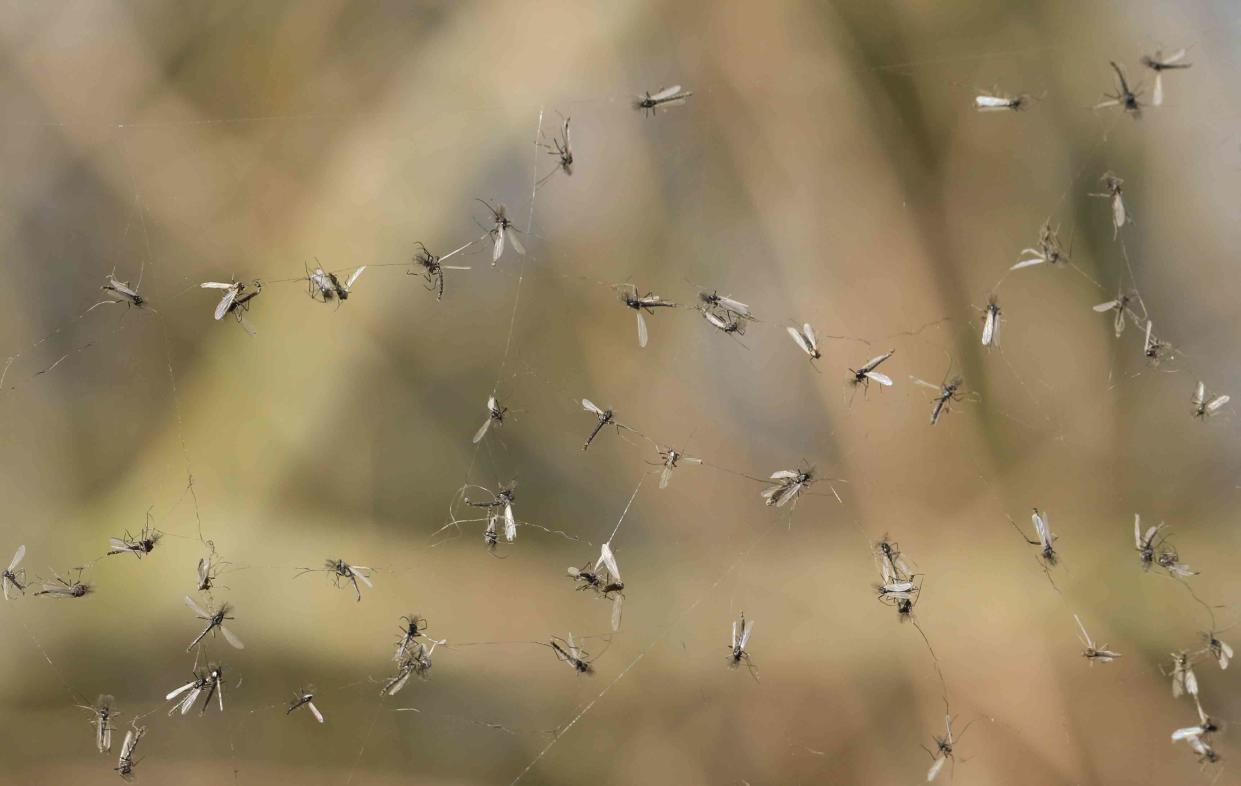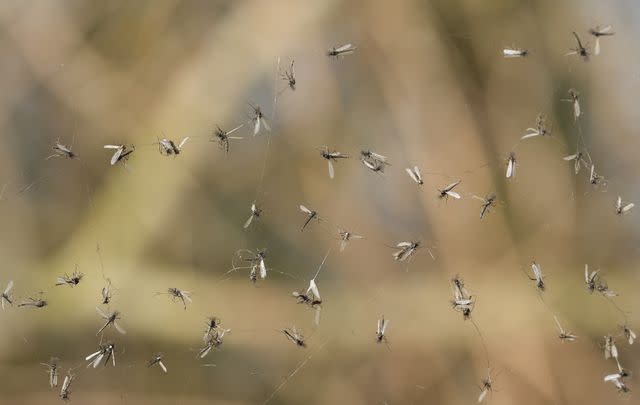Everything You Need to Know About Gnat Bites

sandra standbridge / Getty Images
Medically reviewed by Daniel More, MD
Gnats are small flying insects that many people have seen in their homes or yards. There are two species of gnats, and only one species bites humans. Gnat bites show up as tiny, red, itchy bumps.
This article will cover everything you need to know about gnat bites, including how to identify a gnat bite, how to treat the bite, and preventing future gnat bites.

sandra standbridge / Getty Images
Do Gnats Bite?
Gnats are very tiny gray insects, less than one-eighth of an inch long. They are found throughout the United States but primarily in coastal and farming regions.
There are two species of gnats, with only one type that bites humans. The species that bites humans are called biting midges, and only the female biting midges bite humans. They are commonly found around water sources like swamps, marshes, ponds, and streams. The female midges lay eggs in the mud in these areas.
The female biting midge typically feeds at dawn and dusk. They may continue to feed during the nighttime as well. When the gnat bites, it injects a substance that prevents blood clotting. Their feedings will take between two and five minutes if left undisturbed.
Other Names for Gnats
There are many alternate names for gnats, like:
Midges
No-see-ums
Punkies
Black flies
Moose flies
Buffalo flies
Pictures of Gnat Bites: What Do They Look Like?
Gnat bites are small red, itchy bumps. Since gnats are so small, you may never know that they are feeding on you.
The symptoms of a gnat bite are from the body's reaction to the gnat's saliva. The bite can cause the following:
Small raised bump
Itching
Redness
A less common reaction is fluid-filled blisters around the bite.
How to Treat Gnat Bites
When someone has a bug bite, they must avoid scratching the bite to prevent opening the skin which can cause a secondary infection. Below are the ways to treat gnat bites.
Soap and Water
After someone has been bitten by a gnat they should wash the bite area with soap and water.
Dry the area gently, and make sure to avoid scratching the bite.
Cold Compress
A cold compress can help ease pain, swelling, and itching.
Use a towel rinsed in cold water or ice cubes wrapped in a towel. Don't apply ice directly to the skin. Keep the cold compress on the area for 10 minutes several times daily.
Anti-Itch Creams
Anti-itch creams like hydrocortisone can be applied three times a day to the bite. This will help reduce itching and swelling.
Hydrocortisone can be found as an over-the-counter medication. However, if itching persists, a healthcare provider can prescribe a stronger-strength hydrocortisone.
Antihistamines
Antihistamines like Benadryl (diphenhydramine) are over-the-counter allergy medications that reduce itching and swelling.
Many antihistamines can cause drowsiness. Be sure to follow the medication's instructions.
When to See a Healthcare Provider
Gnat bites typically resolve on their own. However, if someone is having a severe reaction or if the bite becomes infected, they should see a healthcare provider. Here are the signs that would warrant a call to a healthcare provider:
Severe pain that lasts after pain medicine
Signs of infection, like redness that spreads after 48 hours
Scabs that appear infected and do not get better after antibiotic ointment
Seek healthcare immediately if the following symptoms occur:
Trouble breathing
Dizziness
Fainting
Wheezing
Chest tightness
Summary
Gnats are very small insects that fly around in the early mornings and evenings. The female gnats can bite humans, causing an itchy, red bump. Gnats are attracted to moisture and can be found almost anywhere but are primarily found in wet areas. To protect yourself from gnats, cover your skin with clothes and use an insect repellent containing DEET.

